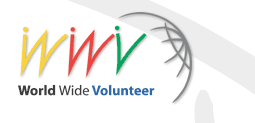Report (Part 6): Sustainable Development Convention 200231 October 2002 © ICVolunteers and IBEX, Geneva, Switzerland Contents
KYRGYZ: Micro-creditTime: 31 October 2002, 16:00-17:00 Location: Room B Chair: Cholpon Dyikanova, CBF Presenters/ Participants: Asel Tagaeva, Kyrgyzstan Community and Business Forum (CBF). Cholpon Dyikanova, Kyrgyzstan Community Business Forum (CBF). An interesting presentation took place about a little known country and small but successful project. A project, which is designed to help the mainly rural population of the Kyrgyz Republic against the damaging social, economical and environmental, affects of the mining industry. An industry that fell into disrepair as a consequence of the collapse of the USSR causing a break down of social structures, an increase in economic uncertainty and much environmental concern, all of which are tackled by the project. The chair and project manager Cholpon Dyikanova began by introducing her fellow panelists and discussing the relationship between Switzerland and the Kyrgyz Republic pointing out many similarities. She went on to talk about how the fall of the USSR had created many problems for the Kyrgyz Republic, including loss of market structure and financing, which led to unemployment and poverty. After this short introduction a film was shown, which introduced the country in more detail, it outlined the political situation after the acquisition of independence and highlighted the problems with the mining industry. The film showed the problems of mining to be linked to their closure, leading to unemployment and environmental degradation, all of which are mainly due to the fall of the Soviet Union. A power point presentation followed exemplifying the countries natural resources, which includes 3% of the world's fauna, 2% of the world's flora and much diverse wildlife. 65% of the population live in rural areas and many relied and still rely on the mining industry, which is a very important source of natural resources. The presentation pointed out that among other resources there are approximately 471 tons of gold reserves in the Kyrgyz Republic. Although many mines have closed some have stayed open, which are causing massive environmental and social problems. The environmental problems are due to the type of mining and the chemicals used especially gold mining and the social problems are concerned with the loss of traditional support systems, unemployment and poverty. Cholpon Dyikanova (CBF) went on to address the project structure and its goals. The focus of the project is on the sustainable development of local communities affected by the mining industry through building cross-sectoral partnerships, raising public awareness, strengthening capacity building of local communities and enhancing socio-economic benefits for the local population. Asel Tagaeva (CBF) added to the presentation by outlining the short and long term benefits of the project, which can be listed as follows; Short Term Benefits
Long Term Benefits
The workshop ended by showing a case study of an old tin mine called Ak-Shyirak, which was closed in 1990 and had 5000 people working in the mine and living in the vicinity of the mine. At present there are only 100 people living in the vicinity of the mine with their social infrastructure destroyed. The project aimed at these people has three goals; 1) Research and mountaineering skills, 2) Community-based conservation and 3) Conservation education. All of which are designed to provide employment, environmental knowledge and social cohesiveness. Conclusions Posted: 2002-10-31 Updated: 2010-1-05 | ||








